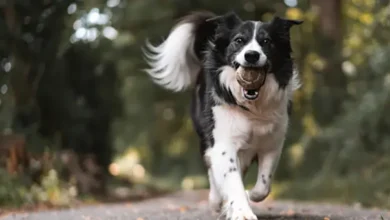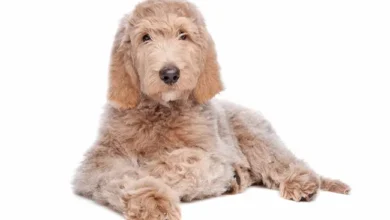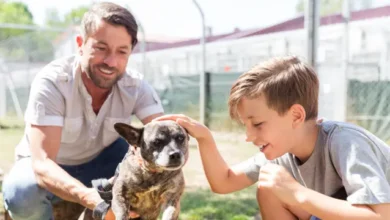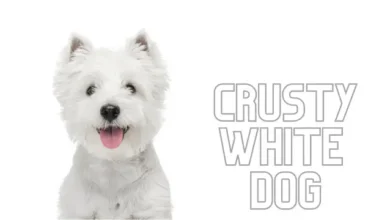The Complete Guide to Dog Hair Dryers: Making Grooming a Breeze
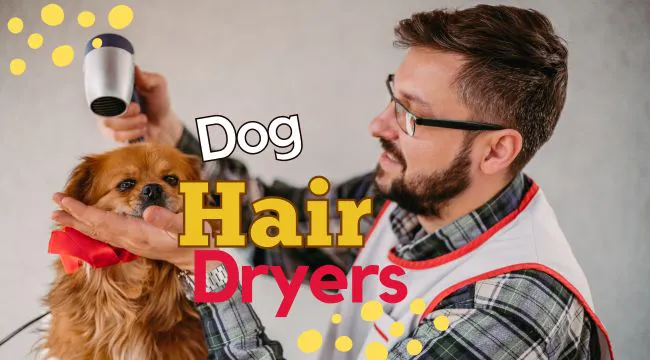
MixbreedDogs.com is an Amazon Associate, and we earn from qualifying purchases.
If you love your furry friend, keeping them happy and healthy is probably high on your list. Grooming is a big part of your pet’s well-being, and a must-have tool for this job is a dog hair dryer. In this guide, we’ll explore everything about dog hair dryers: why they’re important, the different types available, how to choose the right one, and tips for safe and effective use.
Why Do You Need a Dog Hair Dryer?
1. Faster Drying Times: Dog hair dryers work by blowing warm air that quickly dries your pet’s coat. This targeted airflow is much speedier than natural or towel drying, saving you time and keeping your dog comfy during grooming.
2. Prevent Skin and Coat Issues: Proper drying prevents problems like fungal infections and hot spots, which can arise from a damp coat. Dog hair dryers efficiently remove moisture, keeping your dog’s skin and coat healthy.
3. Enhanced Coat Appearance: A well-dried coat not only looks good but is also essential for your dog’s comfort. Whether your pet is a show dog or a family companion, a dog hair dryer ensures their coat remains pristine and well-groomed.
4. Stress Reduction: Traditional air-drying methods might stress some dogs due to their inefficiency. Dog hair dryers offer a quicker, more comfortable experience, reducing your pet’s grooming-related stress.
Types of Dog Hair Dryers
1. High-Velocity Dryers: These are powerful machines designed for professional grooming. They blast warm air through a narrow nozzle, ensuring quick and precise drying. Great for fast results, but they can be loud.
2. Cage Dryers: Common in grooming facilities, these hands-free dryers blow warm air into a cage where the dog is placed. They’re efficient for simultaneous grooming of multiple dogs, but proper monitoring is crucial.
3. Stand Dryers: Perfect for home use, stand dryers are adjustable, quiet, and hands-free. They allow you to groom your dog effectively while the dryer does its job.
4. Handheld Dryers: Portable and lightweight, handheld dryers are versatile tools for home grooming. They allow precise airflow control and are suitable for dogs of all sizes.
Choosing the Right Dog Hair Dryer
1. Size and Portability: Consider the space you have at home and choose a dryer that fits comfortably. Portability is essential for easy handling and storage.
2. Noise Level: Some dogs are sensitive to noise, so opt for a quieter model if your pet is easily startled.
3. Heat Settings: Choose a dryer with adjustable heat settings to cater to your dog’s specific coat type. This prevents overheating, especially in sensitive areas.
4. Safety Features: Ensure the dryer has safety features like overheating protection and secure nozzle attachments to prevent accidents.
Tips for Using a Dog Hair Dryer
- Begin with a Clean Dog:
To ensure an effective drying process, start by giving your dog a thorough bath. Use a dog-friendly shampoo and rinse them well. After the bath, gently towel-dry your pet to remove as much water as possible. Make sure their coat is not dripping wet before you begin using the dog hair dryer. A less wet coat reduces the time needed for drying and ensures that the dryer’s airflow can efficiently do its job. - Use a Low Setting for Sensitive Areas:
Certain parts of your dog’s body, like the face, ears, and paws, are more sensitive and prone to discomfort from heat. When using the dryer on these areas, it’s crucial to select the lowest heat setting or even use cool air. The cool air setting is particularly helpful if your dog is anxious about having these sensitive areas dried. This gentle approach ensures your pet’s comfort and prevents any overheating, making the drying process a more pleasant experience for them. - Keep the Dryer Moving:
Maintaining a continuous, back-and-forth motion with the dryer is essential during the drying process. This movement prevents the risk of overheating in one spot and ensures that your dog’s entire coat dries evenly. Holding the dryer stationary in one area for too long can lead to discomfort or even burns. By consistently moving the dryer over your pet’s body, you achieve a thorough and uniform drying, contributing to their well-being and comfort. - Maintain a Safe Distance:
Different dog hair dryers may have varying heat and airflow intensities, so it’s important to follow the specific guidelines provided in the dryer’s manual regarding the appropriate distance between the nozzle and your dog. Maintaining this safe distance is critical to avoid burns, discomfort, or overheating of your pet’s skin or coat. Refer to the manufacturer’s recommendations to ensure you’re using the dryer at a distance that’s safe and comfortable for your furry friend. - Use Grooming Accessories:
During the drying process, consider incorporating grooming accessories like brushes or combs to achieve a polished finish. Brushing or combing your dog’s coat as you dry it not only helps remove tangles, mats, and loose fur but also leaves their coat looking its best. This extra step enhances the overall grooming experience and contributes to a smoother and more well-groomed appearance for your pet. Brushing or combing during drying can also be a great opportunity for bonding with your dog, making the process enjoyable for both of you.
By following these detailed tips, you can ensure that using a dog hair dryer is not only safe but also an effective and comfortable part of your dog’s grooming routine. Your furry companion will appreciate the care and attention, and you’ll achieve excellent results in keeping their coat in top condition.
Conclusion
Dog hair dryers are vital for your pet’s grooming routine. Understanding the types available and choosing the right one can make grooming a stress-free and enjoyable experience for both you and your furry friend. Follow these tips, and your dog will not only look but also feel their best in no time. Happy grooming!
